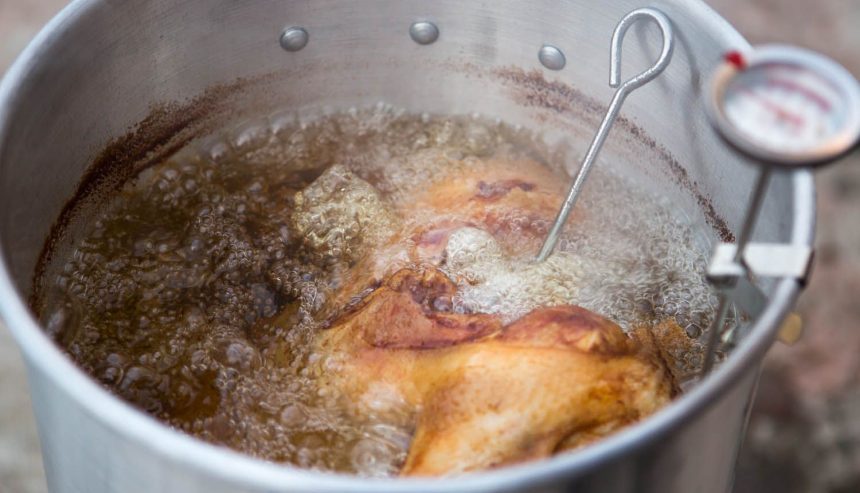
As Thanksgiving approaches, it is important to remember that, amidst the festivity, safety should take precedence.
According to the National Fire Protection Association (NFPA), in 2014, U.S. fire departments responded to an estimated
173,300 home structure fires involving cooking equipment. These fires caused 480 deaths, 5,540 injuries, and $1.1 billion in direct property damage. Unfortunately, Thanksgiving is the peak day for home cooking fires.
The good news is that the vast majority (71%) of Thanksgiving cooking fires are considered “confined fires,” meaning that they don’t result in serious injury or significant property damage. The other main type of fire, a “non-confined fire,” is the opposite, typically resulting in injury and structural damage.
DEEP-FRIED TURKEY
Deep-frying turkeys for Thanksgiving has become very popular. If you plan on deep-frying your turkey, be sure to follow these safety guidelines.
• Turkey fryers should never be used inside the home, inside of a garage or on a deck, because hot oil splattering has the potential to cause fire and injury.
• The fryer should be at least 10 feet away from any structure or trees. The placement area should be very firm and must be flat. Do not move the fryer when it is in use.
• Buy a fryer with at least 4 legs or a solid base because they provide the very best stability for the hot oil cooker.
• Read and carefully follow the fryer’s instructions.
• Make sure the turkey is thawed and dry before cooking. Ice or water that mixes into the hot oil will turn to steam and can cause explosions or large flare-ups.
• Watch the weather. Never operate a fryer outdoors in the rain or snow. If either fall into hot oil, they will turn to steam and can cause serious flare-ups.
• Place the propane tank at least 2 feet from the burner.
• Follow the manufacturer’s instructions to avoid overfilling.
Oil can ignite when it makes contact with the burner
• BEST PRACTICE. Place the turkey in the empty fryer. Add water to the fryer until it just covers the turkey. Remove the turkey and note how much water is in the fryer. Dry the fryer and then add oil until it is 1-2 inches below the water line (the oil expands significantly when heated).
• Choose a smaller turkey for frying. A bird that’s 8 to 10 pounds is best; pass on turkeys over 12 pounds.
• Never leave fryers unattended.
• Purchase a fryer with temperature controls, and watch the oil carefully. Cooking oil that is heated beyond its
smoke point can catch fire. If you notice the oil is smoking, turn the fryer off.
• Turn the burner off before lowering the turkey into the oil. Only when the turkey is submerged and you are finished with the placement, should you turn the burner back on.
• It is recommended that you wear goggles or safety glasses to protect your eyes, use oven mitts to protect your hands and arms, and keep a grease-rated fire extinguisher close by.
• Skip the stuffing when frying turkey, and avoid water-based marinades.
• Keep children and pets away from the fryer at all times.
• Once finished, carefully remove the pot from the burner using oven mitts, place it on a level surface and cover to let the oil cool overnight before disposing.
• Consider using an oil-less fryer which uses infrared heat,
rather than oil, to cook the turkey and is much safer
Even with all the proper precautions in place, accidents and
equipment malfunctions can still happen. That’s where your local
PuroClean office can help in restoring your fire- or smoke-damaged
property to a pre-loss condition.



